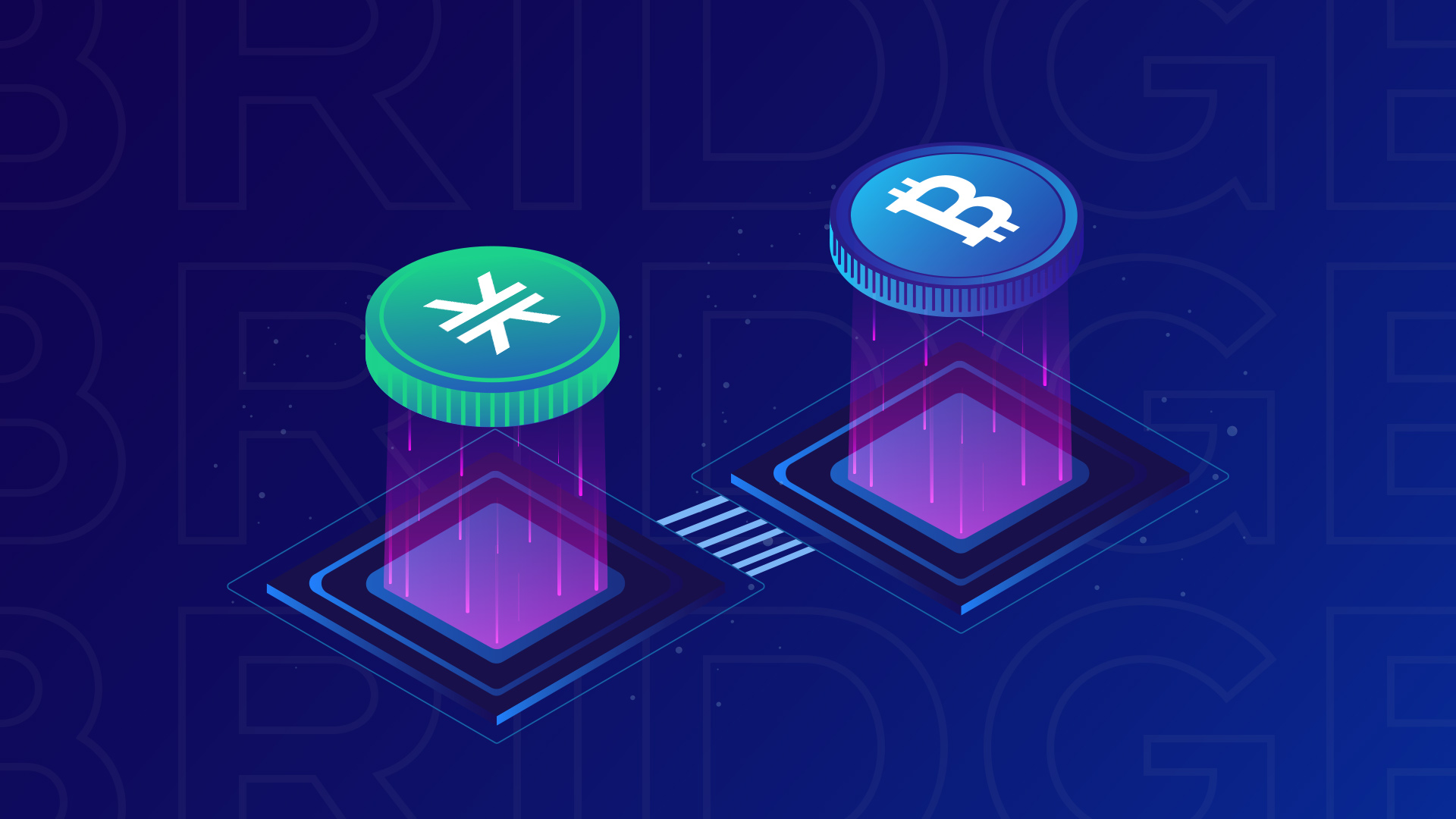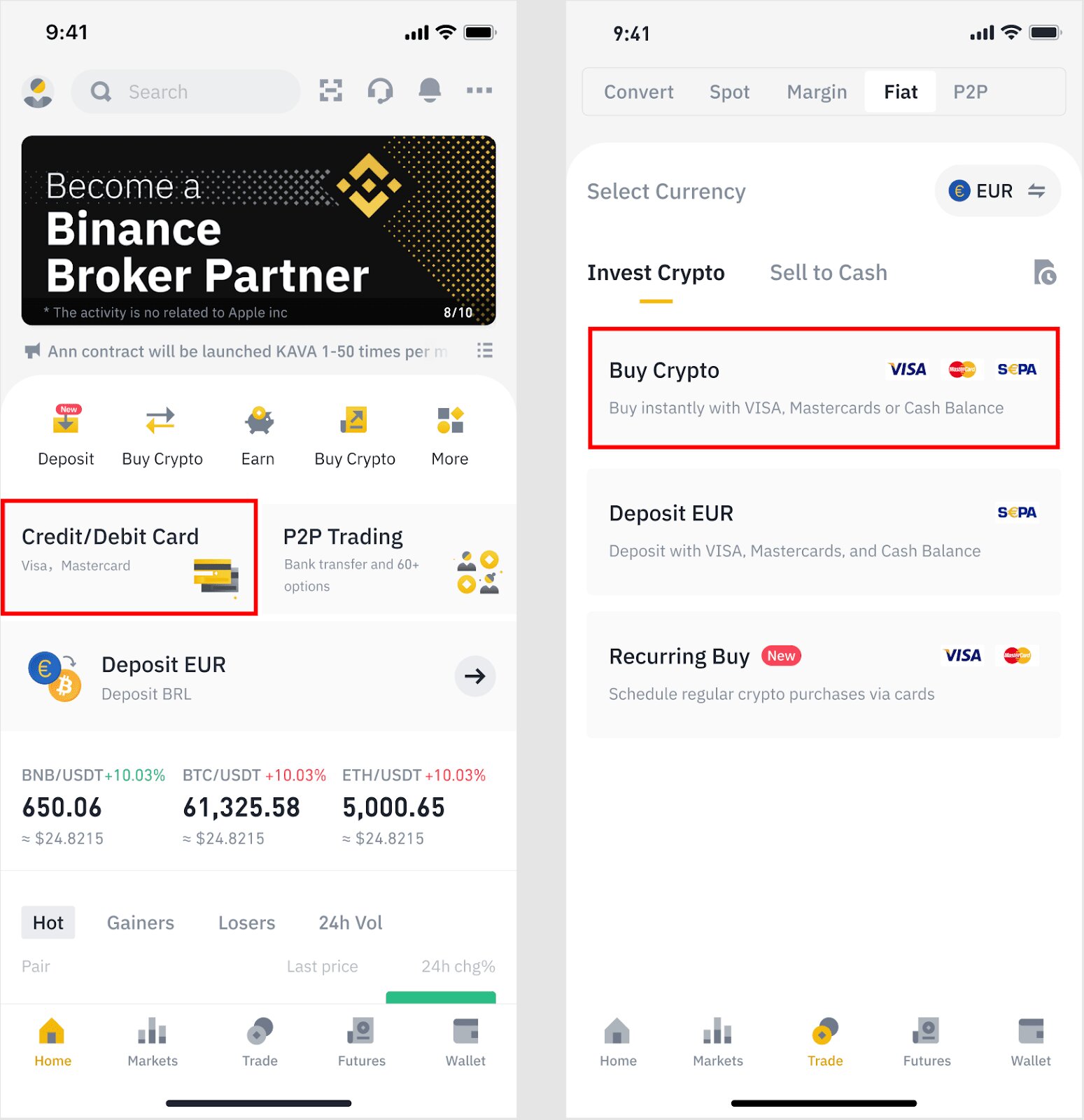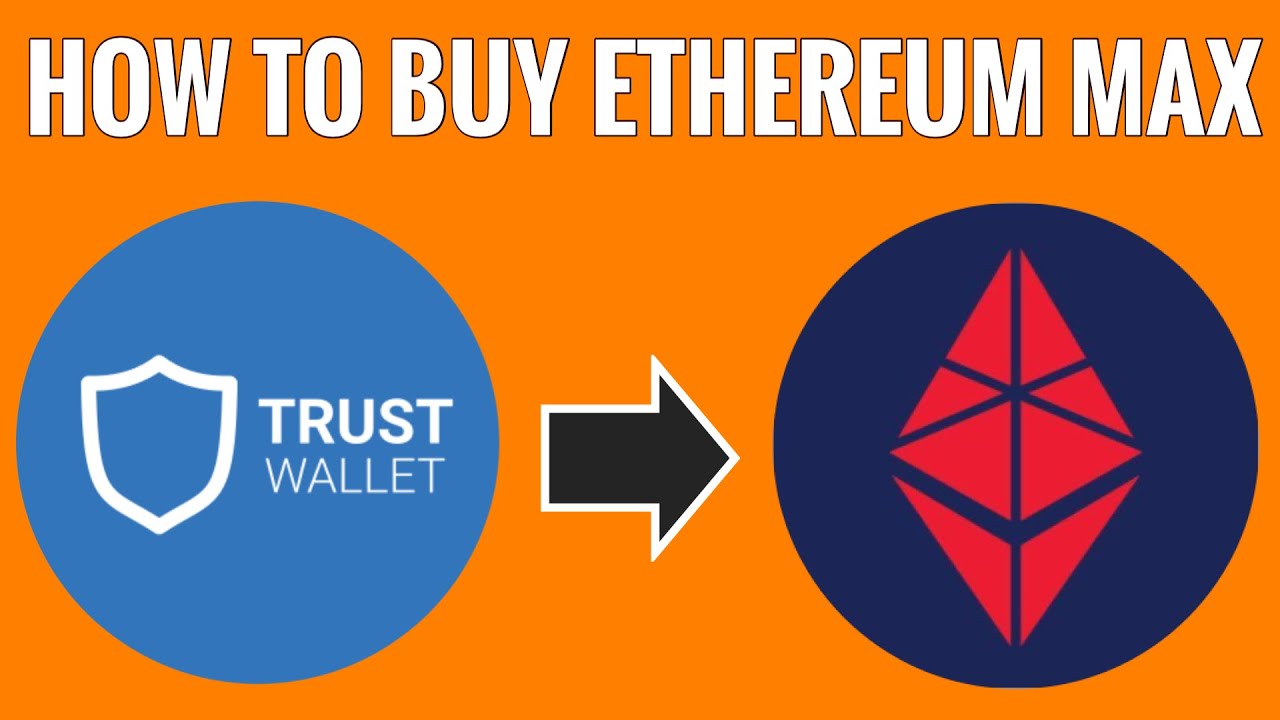Introduction
Welcome to the exciting world of cryptocurrency! Over the past decade, digital currencies have revolutionized the way we perceive and conduct financial transactions. Among the top players in this industry are Bitcoin and Ethereum, two highly popular cryptocurrencies that have captured the attention of investors and enthusiasts worldwide. In this article, we will explore the process of swapping Bitcoin for Ethereum, providing you with a step-by-step guide to ensure a smooth transition between the two cryptocurrencies.
Bitcoin, often referred to as the pioneer of cryptocurrencies, was created in 2009 by an anonymous individual or group known as Satoshi Nakamoto. It operates on a decentralized network, utilizing blockchain technology to facilitate secure transactions. Bitcoin has gained significant recognition for its potential as a store of value, with its limited supply and increasing adoption by mainstream financial institutions.
Ethereum, on the other hand, was introduced in 2015 by the programmer Vitalik Buterin. Unlike Bitcoin, Ethereum serves as a platform for the development and execution of smart contracts and decentralized applications (dApps). It operates using a cryptocurrency called Ether (ETH), which is required for transactions and is used as fuel for the Ethereum network.
Now, you might be wondering why someone would want to swap Bitcoin for Ethereum. While both cryptocurrencies have their unique features and use cases, Ethereum has gained popularity for its versatility and potential for growth. Many investors and enthusiasts are attracted to Ethereum’s ability to execute smart contracts, which enables the creation of various decentralized applications. Additionally, Ethereum has a vibrant and active community, with constant development and innovation in the blockchain space.
Swapping Bitcoin for Ethereum allows you to diversify your cryptocurrency holdings and take advantage of the opportunities presented by both digital assets. By acquiring Ethereum, you gain access to a thriving ecosystem, with numerous projects and applications being built on the Ethereum platform.
To help you navigate the process of swapping Bitcoin for Ethereum, we have prepared a step-by-step guide that will walk you through each stage. From finding a reputable cryptocurrency exchange to storing your newly acquired Ethereum, we will cover all the essential steps to ensure a successful swap. So, let’s dive in and explore the world of cryptocurrency swapping!
What is Bitcoin?
Bitcoin is a digital currency that operates on a decentralized network and uses blockchain technology. It was created in 2009 by an anonymous individual or group known as Satoshi Nakamoto. Bitcoin was the first cryptocurrency, and it laid the foundation for the development of an entirely new financial ecosystem.
At its core, Bitcoin is a peer-to-peer electronic cash system. It enables individuals to send and receive payments directly, without the need for intermediaries such as banks or payment processors. Transactions are verified by network nodes through cryptography and recorded on a public ledger called the blockchain.
One of the key features of Bitcoin is its limited supply. There will only ever be 21 million bitcoins in existence, making it a deflationary asset. This scarcity has contributed to its value appreciation over time, with many investors viewing Bitcoin as a potential store of value.
Bitcoin is built on a decentralized network, which means that no single entity or authority controls it. This decentralized nature ensures that transactions are secure, transparent, and resistant to censorship. Furthermore, it allows users to maintain control over their funds and protects them from potential financial crises or government interventions.
Bitcoin has gained recognition and adoption from various sectors. Many companies now accept Bitcoin as a form of payment, increasing its usefulness in everyday transactions. Additionally, Bitcoin serves as a hedge against traditional fiat currencies and economic instability.
Due to its popularity and widespread acceptance, Bitcoin has become a highly attractive investment asset. Many individuals and institutional investors have allocated a portion of their portfolio to Bitcoin, seeking to benefit from its potential price appreciation and long-term value.
As the first and most well-known cryptocurrency, Bitcoin has paved the way for the development of numerous altcoins and the broader adoption of blockchain technology. Its impact on the financial industry cannot be overstated, as it has challenged traditional monetary systems and introduced a new paradigm for storing and transferring value.
In summary, Bitcoin is a decentralized digital currency that enables secure and direct peer-to-peer transactions. With its limited supply and increasing adoption, Bitcoin has become a prominent player in the world of finance and continues to shape the future of modern currencies.
What is Ethereum?
Ethereum is a decentralized blockchain platform that allows the development and execution of smart contracts and decentralized applications (dApps). It was introduced in 2015 by the programmer Vitalik Buterin, with the aim of expanding the functionalities of blockchain beyond simple peer-to-peer transactions.
Unlike Bitcoin, which primarily serves as a digital currency, Ethereum is a programmable platform that enables developers to create and deploy their own applications on the blockchain. At the core of Ethereum is its native cryptocurrency called Ether (ETH), which acts as the fuel for executing transactions and supporting the network.
Smart contracts are self-executing contracts with predefined terms and conditions written into code. They automatically execute when certain conditions are met, ensuring that agreements are transparent, secure, and tamper-proof. Ethereum’s ability to execute smart contracts has opened up a wide range of possibilities, from decentralized finance (DeFi) applications to supply chain management and decentralized social media platforms.
The Ethereum network operates on a decentralized consensus mechanism called proof of stake (PoS), which is currently transitioning from the previous proof of work (PoW) system. This transition, known as Ethereum 2.0, aims to increase scalability, security, and energy efficiency.
Ethereum has gained significant popularity due to its versatility and potential for innovation. Its open-source nature allows developers from around the world to contribute to the ecosystem, leading to a vibrant community and continuous development. Ethereum has also become the platform of choice for initial coin offerings (ICOs), where companies or projects raise funds by issuing their own tokens on the Ethereum blockchain.
Furthermore, Ethereum’s decentralized nature ensures that applications built on the platform are resistant to censorship, fraud, and downtime. It offers individuals and businesses the opportunity to create and interact with decentralized systems that are not controlled by any central authority.
As the second-largest cryptocurrency by market capitalization, Ethereum has garnered attention from investors and institutions alike. Many see it as more than just a digital currency but rather as a means of unlocking the full potential of blockchain technology for various sectors and industries.
In summary, Ethereum is a decentralized blockchain platform that allows the creation and execution of smart contracts and decentralized applications. With its programmable capabilities and vibrant ecosystem, Ethereum has become a driving force behind the evolution of blockchain technology and the decentralized web.
Why Swap Bitcoin for Ethereum?
While Bitcoin and Ethereum are both prominent cryptocurrencies in the digital asset market, there are compelling reasons why one might consider swapping Bitcoin for Ethereum. Here are a few key factors that make Ethereum an attractive choice for investors and enthusiasts:
1. Versatility and Functionality: Ethereum is more than just a digital currency. It is a programmable blockchain platform that allows the development and execution of smart contracts and decentralized applications (dApps). This opens up a wide range of possibilities for businesses and developers to create innovative applications on the Ethereum network, from decentralized finance (DeFi) platforms to gaming and decentralized social media.
2. Thriving Ecosystem: Ethereum has a robust and active community of developers, entrepreneurs, and enthusiasts. The ecosystem is constantly evolving, with new projects, protocols, and applications being built on top of the Ethereum blockchain. This vibrant community fosters innovation and creates opportunities for growth and collaboration.
3. Potential for Growth: Many experts and industry insiders believe that Ethereum has significant long-term potential. Its versatile nature and widespread adoption make it an appealing option for investors looking to diversify their cryptocurrency portfolio. As more projects and applications are developed on the Ethereum platform, there is a possibility of increased demand for Ether (ETH), the native cryptocurrency of Ethereum.
4. DeFi Revolution: Ethereum has become the primary platform for decentralized finance (DeFi) applications. DeFi aims to recreate traditional financial systems using open-source protocols and smart contracts, providing greater accessibility, transparency, and security. Swapping Bitcoin for Ethereum allows investors to participate in the growing DeFi ecosystem and take advantage of the innovative financial products and services being built on Ethereum.
5. Network Upgrades: Ethereum is currently undergoing a major upgrade known as Ethereum 2.0. This upgrade aims to address scalability issues and transition the network to a more efficient and sustainable proof-of-stake (PoS) consensus algorithm. The anticipated improvements in speed, scalability, and security make Ethereum an attractive option for those looking for a technologically advanced blockchain platform.
6. Diversification: Swapping Bitcoin for Ethereum allows investors to diversify their cryptocurrency holdings. While Bitcoin has paved the way for the industry and established itself as a digital store of value, Ethereum offers a different set of opportunities and use cases. By holding both Bitcoin and Ethereum, investors can benefit from the potential growth of both cryptocurrencies while spreading their risk across different assets.
In summary, swapping Bitcoin for Ethereum provides investors and enthusiasts with access to a versatile and thriving ecosystem. From its programmable capabilities to the burgeoning DeFi landscape and the ongoing network upgrades, Ethereum offers a range of opportunities and potential for growth. However, it’s important to note that each individual’s investment strategy and goals should be considered before making any swaps or decisions.
Step-by-Step Guide to Swapping Bitcoin for Ethereum
Swapping Bitcoin for Ethereum involves a series of steps to ensure a seamless and secure transition between the two cryptocurrencies. Here is a step-by-step guide to help you through the process:
1. Finding a reputable cryptocurrency exchange: Start by conducting research and finding a reliable and reputable cryptocurrency exchange that supports both Bitcoin and Ethereum. Consider factors such as security, user interface, fees, and customer reviews to make an informed decision.
2. Creating an account: Sign up for an account on the chosen cryptocurrency exchange. Provide the required information and follow the account creation process. Make sure to choose a strong and unique password for security purposes.
3. Verifying your identity: Many exchanges require users to verify their identity for regulatory compliance. Submit the necessary identification documents, such as a passport or driver’s license, as requested by the exchange. The verification process may take some time, so be patient.
4. Depositing Bitcoin into your exchange account: Once your account is set up and verified, deposit the Bitcoin you wish to swap for Ethereum into your exchange wallet. Obtain the deposit address from the exchange and initiate the transfer from your personal Bitcoin wallet or another exchange where you hold Bitcoin.
5. Placing a trade to swap Bitcoin for Ethereum: Navigate to the trading section of the exchange and select the trading pair BTC/ETH. Specify the amount of Bitcoin you want to swap for Ethereum and review the current exchange rate. Verify the details and place the trade.
6. Confirming your swap: After placing the trade, the exchange will process the transaction. Depending on network congestion and the exchange’s processing time, it may take a few minutes to several hours for the swap to be completed. Monitor your account and wait for confirmation.
7. Storing your newly acquired Ethereum: Once the swap is complete, you will have received Ethereum in your exchange wallet. It is generally recommended to transfer your newly acquired Ethereum to a personal wallet that you control. This ensures you have full control over your funds and reduces the risk of potential exchange hacks or security breaches.
8. Keeping track of your transactions: Maintain accurate records of your swap transactions, including the date, time, and amounts involved. This will help with tracking your portfolio, tax obligations, and overall financial management.
By following these step-by-step instructions, you can successfully swap Bitcoin for Ethereum and start taking advantage of the opportunities presented by Ethereum’s vibrant ecosystem and decentralized applications.
Note that the specific details and user interface may vary depending on the cryptocurrency exchange you choose. Consult the exchange’s support and help sections for any additional guidance or assistance during the swapping process.
Finding a Reputable Cryptocurrency Exchange
When it comes to swapping Bitcoin for Ethereum, finding a reputable cryptocurrency exchange is crucial. With the increasing popularity of digital assets, the number of exchanges has grown significantly, making it necessary to exercise caution to ensure the security of your funds. Here are some key factors to consider when searching for a reputable cryptocurrency exchange:
1. Security: Security should be a top priority when selecting a cryptocurrency exchange. Look for exchanges that have robust security measures in place, such as two-factor authentication (2FA), cold storage for funds, regular security audits, and a strong track record in safeguarding user assets. Additionally, check if the exchange has experienced any major security breaches in the past and how they responded to and resolved such incidents.
2. Regulation and Compliance: Find out if the exchange operates in a regulated jurisdiction and complies with relevant regulations. Exchanges adhering to regulatory guidelines typically have stricter security protocols in place and follow standard procedures to protect users’ funds and personal information. Regulatory compliance adds an extra layer of trust and transparency to the exchange.
3. User Interface: An easy-to-use and intuitive user interface is essential, especially for beginners. Ensure that the exchange’s platform is user-friendly, with clear navigation and concise instructions. A cluttered or confusing interface can make the swapping process more challenging and increase the risk of making errors during trades.
4. Liquidity: Liquidity refers to the ability to buy or sell assets quickly without significantly impacting the market price. Choose an exchange with high liquidity to ensure that your trades can be executed efficiently and at fair market prices. Exchanges with higher trading volumes generally offer better liquidity options.
5. Fees: Understand the fee structure of the exchange before making a decision. Exchanges usually charge fees for trades, deposits, withdrawals, and other services. Compare the fee schedules of different exchanges to ensure that they align with your trading strategy and budget. However, keep in mind that very low fees may indicate a lack of security or reliability.
6. Customer Support: Reliable and responsive customer support is essential. Look for exchanges that provide multiple support channels, such as email, live chat, and phone support. Exchanges with active and helpful customer service teams can assist you in resolving any issues or answering your queries promptly.
7. Reputation and Reviews: Research the exchange’s reputation and read user reviews, forums, and social media discussions to gain insights into the experiences of other users. Look for feedback related to security, customer support, trading experience, and overall user satisfaction. However, be cautious as some reviews may be biased or based on individual experiences.
8. Supported Trading Pairs: Ensure that the cryptocurrency exchange offers support for exchanging Bitcoin for Ethereum. Verify that the specific trading pairs you are interested in are available on the exchange. Additionally, consider the range of other digital assets available on the platform if you plan to expand your investment portfolio in the future.
By thoroughly researching and considering these factors, you can find a reputable cryptocurrency exchange that meets your needs and ensures a secure and seamless process for swapping Bitcoin for Ethereum. Remember to take the time to understand the exchange’s terms and policies before creating an account and initiating any transactions.
Creating an Account
Before you can swap Bitcoin for Ethereum, you will need to create an account on a reputable cryptocurrency exchange. The account creation process typically involves a few straightforward steps. Here’s a guide on how to create an account on a cryptocurrency exchange:
1. Choose a suitable exchange: Research and select a cryptocurrency exchange that meets your requirements, taking into consideration factors such as security, fees, user interface, and supported trading pairs.
2. Visit the exchange’s website: Access the official website of the chosen exchange and locate the “Sign Up” or “Register” button. Clicking on this button will start the account creation process.
3. Provide your email address and password: Enter a valid email address and create a strong, unique password. It is essential to use a combination of letters, numbers, and special characters to enhance the security of your account. Consider using a password manager to securely store and generate strong passwords.
4. Confirm your email: After providing your email address, the exchange will send a confirmation email. Check your inbox and click on the confirmation link to verify your email address. Some exchanges may require you to enter a verification code from the email as an additional security measure.
5. Secure your account with two-factor authentication (2FA): Enable two-factor authentication to add an extra layer of security to your account. Two-factor authentication requires you to provide a second form of verification, typically through an authentication app or SMS code, in addition to your password.
6. Complete your profile: In order to comply with regulatory requirements, the exchange may ask you to complete your profile by providing additional personal information. This may include your full name, date of birth, and residential address. Ensure that you provide accurate and up-to-date information.
7. Set up additional security measures: Alongside two-factor authentication, consider implementing other security measures offered by the exchange, such as IP whitelisting or withdrawal address whitelisting. These features can add an extra layer of protection to your account and prevent unauthorized access.
8. Read and accept the terms and conditions: Take the time to read the exchange’s terms and conditions carefully. Familiarize yourself with the platform’s rules, policies, and any applicable fees. By accepting the terms and conditions, you acknowledge that you understand and agree to abide by the exchange’s rules and regulations.
9. Securely store your login credentials: After creating your account, make sure to store your login credentials securely. Consider using a password manager or writing down the information in a safe and secure place. Avoid sharing your login details with anyone and be cautious of phishing attempts or fake login pages.
Once you have successfully created an account on the cryptocurrency exchange, you will be ready to proceed with the next steps, such as verifying your identity and depositing Bitcoin for the swap to Ethereum. Familiarize yourself with the exchange’s user interface and explore the available features to ensure a smooth trading experience.
Remember, the specific account creation process may vary slightly depending on the exchange you choose. If you encounter any issues or require assistance, consult the exchange’s support resources or contact their customer service for guidance.
Verifying Your Identity
Verifying your identity is a crucial step in the account setup process on most reputable cryptocurrency exchanges. Identity verification is required to comply with regulatory guidelines and ensure the security and integrity of the platform. Here’s a guide on how to verify your identity on a cryptocurrency exchange:
1. Login to your account: Access your newly created cryptocurrency exchange account using your email address and password. Ensure that you are on the official exchange website and not a fraudulent site.
2. Navigate to the verification section: Look for the “Verification,” “KYC,” or “Account Verification” section on the exchange platform. This section is typically located in the account settings or profile settings area.
3. Provide the required personal information: The exchange will ask you to provide relevant personal information to verify your identity. This may include your full name, date of birth, residential address, and sometimes your social security number or government-issued identification number.
4. Upload identification documents: The exchange will request scanned or clear images of certain identification documents, such as a passport, driver’s license, or national identification card. Follow the instructions provided by the exchange to upload these documents securely.
5. Take a verification photo: Some exchanges require you to take a selfie or verification photo while holding your identification document or a handwritten note with specific instructions provided by the exchange. This helps ensure that the person submitting the documents is the same person depicted in the identification.
6. Submit the verification request: Once you have provided all the necessary information and uploaded the required documents, review the details for accuracy and completeness. Double-check that the uploaded images are clear and all requested information has been provided. Then, submit the verification request.
7. Wait for verification: The verification process may take some time, ranging from a few minutes to several days, depending on the exchange and the volume of verification requests. Exchanges often prioritize security and thoroughness in the verification process, so be patient while your identity is being verified.
8. Follow up, if needed: If the exchange requires additional documentation or information, they will typically contact you via email or provide instructions within your account. Keep an eye on your email inbox and account notifications to ensure you respond promptly to any requests.
9. Verify your account status: Once your identity verification is complete, you will typically receive a notification confirming the status of your account. This notification may indicate that your account has been fully verified, requires further verification, or has been denied. If there are any issues or concerns, reach out to the exchange’s customer support for assistance.
It is important to note that the specific verification process can vary between exchanges. Some exchanges may have additional tiers of verification, such as enhanced verification for higher transaction limits. Ensure you familiarize yourself with the exchange’s specific requirements and comply with all necessary steps to complete the identity verification process.
A successfully verified account allows you to proceed with depositing Bitcoin and trading for Ethereum, providing you with access to a wider range of cryptocurrency opportunities within the exchange’s platform.
Depositing Bitcoin into Your Exchange Account
Before you can swap Bitcoin for Ethereum, you need to deposit your Bitcoin into your exchange account. This step allows you to have the necessary funds available for trading. Here’s a guide on how to deposit Bitcoin into your exchange account:
1. Log in to your exchange account: Access your cryptocurrency exchange account using your login credentials. Ensure that you are on the official exchange website and that it is secured with HTTPS encryption.
2. Navigate to the deposit section: Look for the “Deposit” or “Wallet” section within your account. This section may be labeled differently on each exchange but generally contains options related to adding or depositing funds.
3. Select Bitcoin (BTC) as the deposit currency: Within the deposit section, locate Bitcoin (BTC) from the list of available cryptocurrencies. Click on “Bitcoin” or the associated symbol to initiate the deposit process specifically for Bitcoin.
4. Generate a deposit address: The exchange will generate a unique deposit address for your Bitcoin. This address is a long string of characters associated with your exchange account. It serves as the destination for depositing your Bitcoin.
5. Copy the deposit address: Copy the generated Bitcoin deposit address to your clipboard. Double-check that you have copied the address accurately, as sending Bitcoin to the wrong address can result in irreversible loss of funds.
6. Initiate the transfer from your personal Bitcoin wallet: Open your personal Bitcoin wallet or another exchange where you hold Bitcoin. Locate the “Send” or “Withdraw” function within the wallet or exchange platform. Paste the previously copied deposit address into the recipient address field.
7. Specify the amount to deposit: Enter the amount of Bitcoin you wish to deposit into your exchange account. Take note of any minimum deposit requirements or network transaction fees that may apply. It is always wise to double-check the amount to ensure accuracy.
8. Review and confirm the transaction: Review all the transaction details, including the recipient address, deposit amount, and any associated fees. Verify that everything is correct before confirming the transaction. Once confirmed, the Bitcoin transfer will be initiated.
9. Wait for the transaction confirmation: The Bitcoin network will process the transaction, and it may take some time for the network to confirm the transfer. Blockchain confirmations typically require several minutes to hours, depending on network congestion. Monitor the confirmation status within your personal wallet or exchange transaction history.
10. Verify the deposit in your exchange account: After the Bitcoin transfer is confirmed, check your exchange account balance or the designated wallet within your account. You should see your deposited Bitcoin reflected in your account balance.
11. Account for minimum deposit requirements and confirmations: Some exchanges require a minimum number of confirmations before the deposited Bitcoin becomes available for trading. Be aware of any minimum requirements and ensure that your Bitcoin has met them before proceeding with the trade.
By successfully depositing Bitcoin into your exchange account, you are one step closer to swapping it for Ethereum. Ensure that you securely store your Bitcoin wallet and exchange account credentials to protect your assets from unauthorized access.
Remember that the deposit process and user interface may differ slightly between cryptocurrency exchanges. Consult the exchange’s support documentation or reach out to their customer support if you encounter any issues during the deposit process.
Placing a Trade to Swap Bitcoin for Ethereum
Once you have successfully deposited Bitcoin into your exchange account, you can proceed with placing a trade to swap it for Ethereum. This step involves executing a transaction on the exchange platform to convert your Bitcoin into Ethereum. Here’s a step-by-step guide on how to place a trade:
1. Log in to your exchange account: Access your account using your login credentials, ensuring that you are on the official exchange website.
2. Navigate to the trading section: Locate the “Trading” or “Trade” section within the exchange platform. This section is where you can initiate and manage your trades.
3. Select the BTC/ETH trading pair: Within the trading section, locate and select the trading pair for Bitcoin and Ethereum, usually listed as BTC/ETH. This selection enables you to trade your deposited Bitcoin for Ethereum.
4. Choose the trade type: Decide on the type of trade order you wish to place. The most common types include market orders and limit orders. A market order executes immediately at the current market price, while a limit order allows you to set a specific price at which you want to buy Ethereum.
5. Enter the trade details: Depending on the trade type, provide the necessary information. For a market order, simply enter the amount of Bitcoin you want to swap. For a limit order, specify the desired price and quantity of Ethereum.
6. Review the trade details: Double-check the trade details, ensuring that the entered information, such as the trade type, amount, and price, is accurate. Pay attention to any associated fees, especially for market orders, where the execution price may differ slightly due to market fluctuations and fees.
7. Place the trade: Once you have reviewed the trade details and are satisfied, click on the “Place Trade” or similar button to initiate the trade. Be aware that the trade execution may not be instantaneous, especially during periods of high trading activity.
8. Monitor the trade execution: Keep an eye on your trade order to track its execution. The exchange platform will typically display the current status of your order, such as “open,” “partially filled,” or “filled.” Patience is key as some orders may take a few minutes to complete, depending on various factors.
9. Verify the completion of the trade: Once the trade is executed, check your account balance or trading history to confirm that you have successfully swapped your Bitcoin for Ethereum. You should see the new Ethereum balance reflected in your account.
10. Review the trade confirmation details: Ensure that you review the trade confirmation details, including the executed volume, price, and any associated fees. These details are important for tracking your investment and managing your portfolio.
By placing a trade, you have successfully swapped your Bitcoin for Ethereum on the exchange platform. It’s recommended to transfer your newly acquired Ethereum from the exchange to a personal wallet for increased security and control over your assets.
Remember, the trading process may vary slightly between cryptocurrency exchanges. Familiarize yourself with the trading features and options offered by the specific exchange you are using. Explore their support resources or seek assistance from customer support if you encounter any difficulties during the trade execution process.
Confirming Your Swap
After placing a trade to swap Bitcoin for Ethereum on a cryptocurrency exchange, it is important to confirm that the swap has been successfully executed. Confirming your swap ensures that the Ethereum has been credited to your account and the Bitcoin has been deducted accordingly. Here’s what you need to do to confirm your swap:
1. Check your order status: Navigate to the “Order History” or “Trade History” section within your exchange account. Locate the trade order you placed to swap Bitcoin for Ethereum. The order status should provide information on whether the trade has been filled or partially filled.
2. Verify your new Ethereum balance: Check your Ethereum wallet or account balance to confirm that the newly acquired Ethereum has been credited to your account. Ensure that the amount matches the intended swap and that it aligns with the trade execution details.
3. Monitor your Bitcoin balance: As the swap involves deducting Bitcoin from your account, verify that the Bitcoin balance has been reduced accordingly. Ensure that the deduction aligns with the trade execution details and the amount you intended to swap.
4. Cross-reference trade details: Compare the trade details, such as the executed volume, price, and timestamps, with the confirmation details provided on the exchange platform. Ensure that all the information matches and is consistent with your swap order.
5. Review the trading fee: Confirm the trading fee deducted from your account for executing the swap. Review the fee amount and ensure that it aligns with the exchange’s fee structure or the details specified during the trade order placement.
6. Double-check transaction confirmations: Verify the number of confirmations received for the Ethereum transaction. The number of confirmations indicates the level of security and immutability of the transaction. Higher numbers of confirmations increase the confidence that the transaction is valid and irreversible.
7. Monitor transaction history: Keep track of the transaction history associated with the swap. The exchange platform should provide a transaction history log that outlines the details of the swap, including the transaction IDs, timestamps, and wallet addresses involved in the trade.
8. Seek assistance, if needed: If you have any doubts, discrepancies, or concerns regarding the confirmation of your swap, reach out to the exchange’s customer support. They can provide further clarification or assistance in verifying the swap execution.
By confirming your swap, you ensure the accuracy and completeness of the trade execution. This verification process allows you to move forward confidently, knowing that the Bitcoin-to-Ethereum swap has been successfully completed on the exchange platform.
While the confirmation process is generally straightforward, it is important to stay vigilant and regularly monitor your account to detect any irregularities or potential issues. Keep a record of your trade details and confirmation information to assist with tracking your investment portfolio and for future reference.
Remember that the specific interface and confirmation options may vary between cryptocurrency exchanges. Refer to the exchange’s documentation or contact their support team if you require further guidance or encounter any challenges during the confirmation process.
Storing Your Newly Acquired Ethereum
After successfully swapping your Bitcoin for Ethereum, it is crucial to store your newly acquired Ethereum in a secure manner. Storing Ethereum securely ensures that you maintain control over your assets and minimizes the risk of unauthorized access or potential loss. Here are some important considerations for storing your Ethereum:
1. Consider a Hardware Wallet: Hardware wallets, such as Ledger or Trezor, are physical devices that provide an extra layer of security for storing your Ethereum offline. These wallets keep your private keys offline and require physical confirmation for transactions, making them less susceptible to hacks or online attacks.
2. Use a Software Wallet: Software wallets are applications or programs that can be installed on your computer or mobile device. They secure your Ethereum with encryption and require passwords or PINs for access. Examples of software wallets include MetaMask, MyEtherWallet (MEW), or Trust Wallet.
3. Multi-Signature Wallets: Consider utilizing a multi-signature wallet for added security. These wallets require multiple private key signatures to authorize transactions, making it more difficult for a single point of failure or malicious actors to compromise your funds. Multi-signature wallets can be hardware wallets, software wallets, or specialized services.
4. Avoid Exchanges for Long-Term Storage: While exchanges are convenient for trading, it is generally not recommended to store your Ethereum on exchanges for an extended period. Exchanges are susceptible to security breaches or hacking attempts. Instead, withdraw your Ethereum from the exchange to a personal wallet where you control the private keys.
5. Backup Your Wallet: Whether you choose a hardware or software wallet, make sure to create a backup of your wallet’s private keys or recovery seed phrase. Store this backup securely in multiple locations, such as a safe deposit box, encrypted USB drive, or a hardware wallet backup sheet. In the event of loss, theft, or damage, you can use the backup to restore your wallet and access your Ethereum.
6. Be Cautious of Phishing Attempts: Be vigilant against phishing attempts, which are fraudulent attempts to trick you into revealing your private keys, passwords, or other sensitive information. Always ensure you are accessing your wallet through the authentic website or application, double-check URLs for accuracy, and never share your private keys or recovery phrases with anyone.
7. Keep Your Software Updated: Regularly update your wallet software to benefit from the latest security enhancements and bug fixes. Wallet providers often release updates to address vulnerabilities, so staying up-to-date reduces the risk of exploits or weaknesses in older versions.
8. Test Small Transactions: Before making significant transfers of Ethereum, consider sending a small test transaction to ensure that you have set up your wallet correctly and that you can access and manage your funds as intended.
9. Be Mindful of Physical Security: If you are using a hardware wallet, keep it safe and secure. Protect it from physical damage, loss, or theft. Treat your hardware wallet like you would treat cash or other valuable possessions.
By following these recommendations, you can ensure the security and safekeeping of your newly acquired Ethereum. Regularly review best practices, stay informed about new security measures, and remain cautious to protect your assets from potential threats.
Remember that the responsibility for safeguarding your Ethereum rests with you. Take the necessary precautions to store your Ethereum securely and avoid sharing sensitive information with unauthorized individuals or untrusted platforms.
Conclusion
Swapping Bitcoin for Ethereum can be an exciting and potentially profitable venture in the world of cryptocurrencies. Throughout this guide, we have explored the process of swapping Bitcoin for Ethereum step by step, providing you with the necessary information to navigate the process successfully.
We began by understanding the fundamental concepts of Bitcoin and Ethereum and why one might consider swapping Bitcoin for Ethereum. Bitcoin, being the pioneer cryptocurrency, is widely recognized as a store of value, while Ethereum offers versatility and functionality with its programmable smart contracts and decentralized applications.
We then delved into the practical aspects of swapping Bitcoin for Ethereum, starting with finding a reputable cryptocurrency exchange. Selecting a reliable and secure exchange is crucial to ensure the safety of your funds and personal information. We discussed the importance of factors such as security, user interface, liquidity, and customer support when evaluating exchanges.
An essential step in the process is creating an account on the cryptocurrency exchange of your choice. We highlighted the need to provide accurate information and verify your identity to comply with regulatory requirements.
Depositing Bitcoin into your exchange account allows you to have the necessary funds for the swap. We emphasized the significance of copying the deposit address accurately and initiating the transfer from a personal Bitcoin wallet or another exchange.
Placing a trade to swap Bitcoin for Ethereum on the exchange platform requires understanding different trade types and carefully reviewing the trade details. We covered market orders and limit orders, helping you navigate the trading process efficiently.
Confirming the swap ensures that your Bitcoin has been converted into Ethereum as intended. We discussed the importance of reviewing trade details, verifying account balances, and monitoring transaction confirmations.
Finally, we emphasized the significance of storing your newly acquired Ethereum securely. Hardware wallets, software wallets, and multi-signature wallets provide options for safe storage, while caution against phishing attempts, regular software updates, and physical security measures are essential for protecting your assets.
Remember that the cryptocurrency market is dynamic and ever-evolving. Stay updated with the latest market trends, security practices, and regulatory changes to make informed decisions and effectively manage your investments.
With this guide, you are now equipped to navigate the process of swapping Bitcoin for Ethereum. Enjoy exploring the opportunities and potentials offered by Ethereum’s vibrant ecosystem, and make sure to conduct thorough research and exercise caution as you continue your cryptocurrency journey.

























